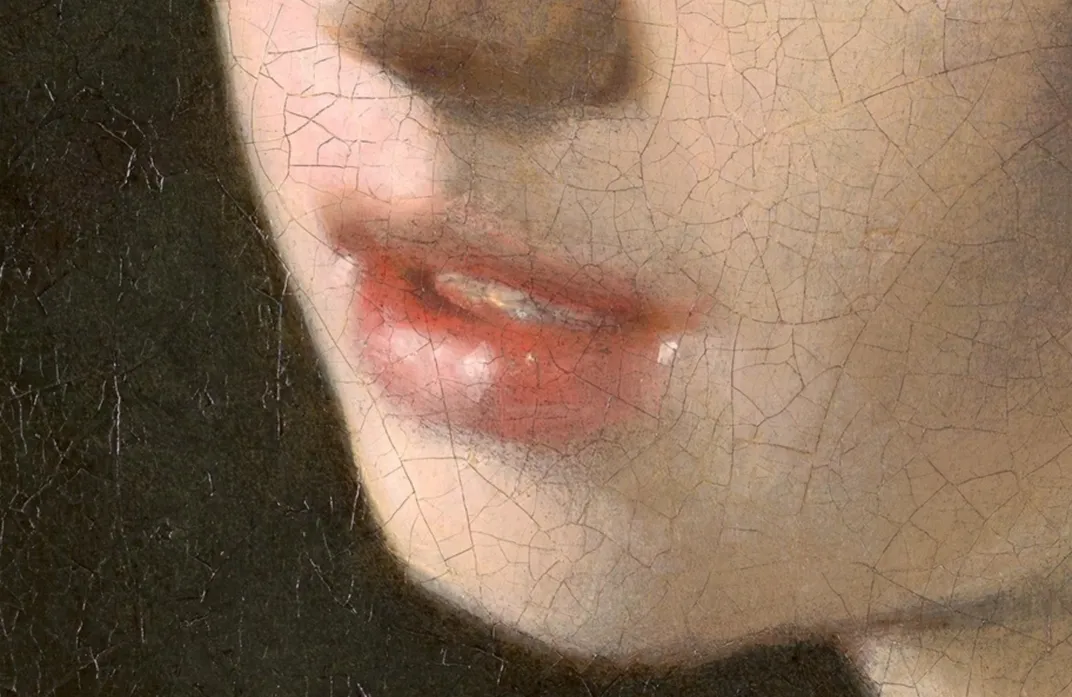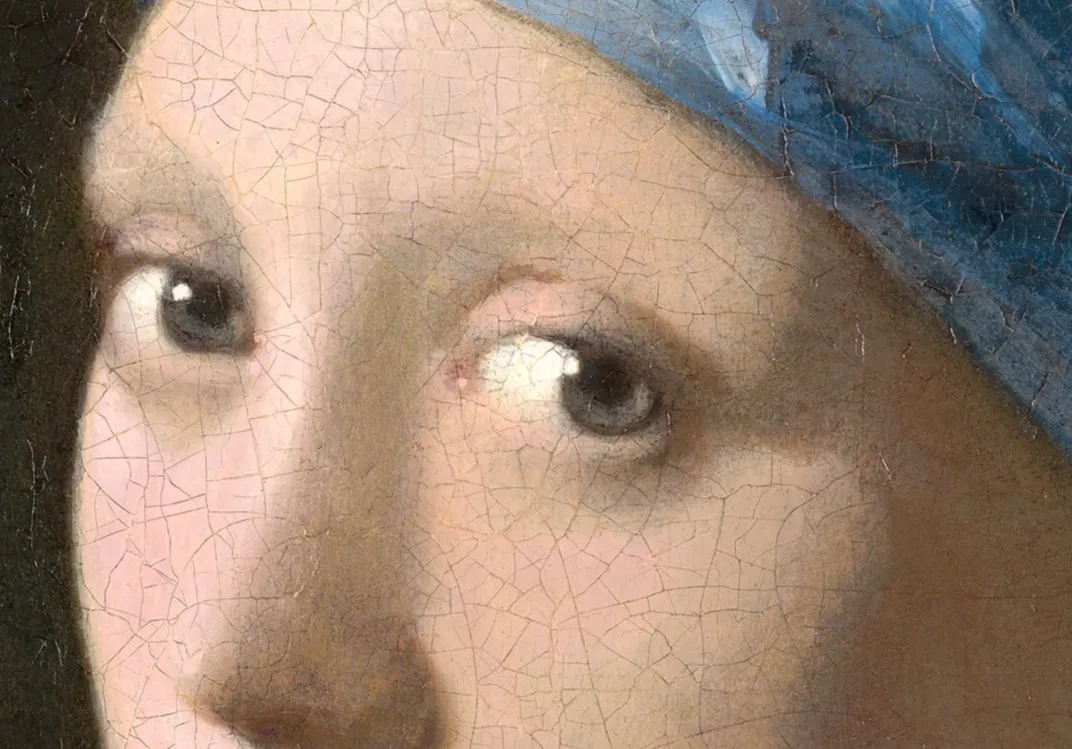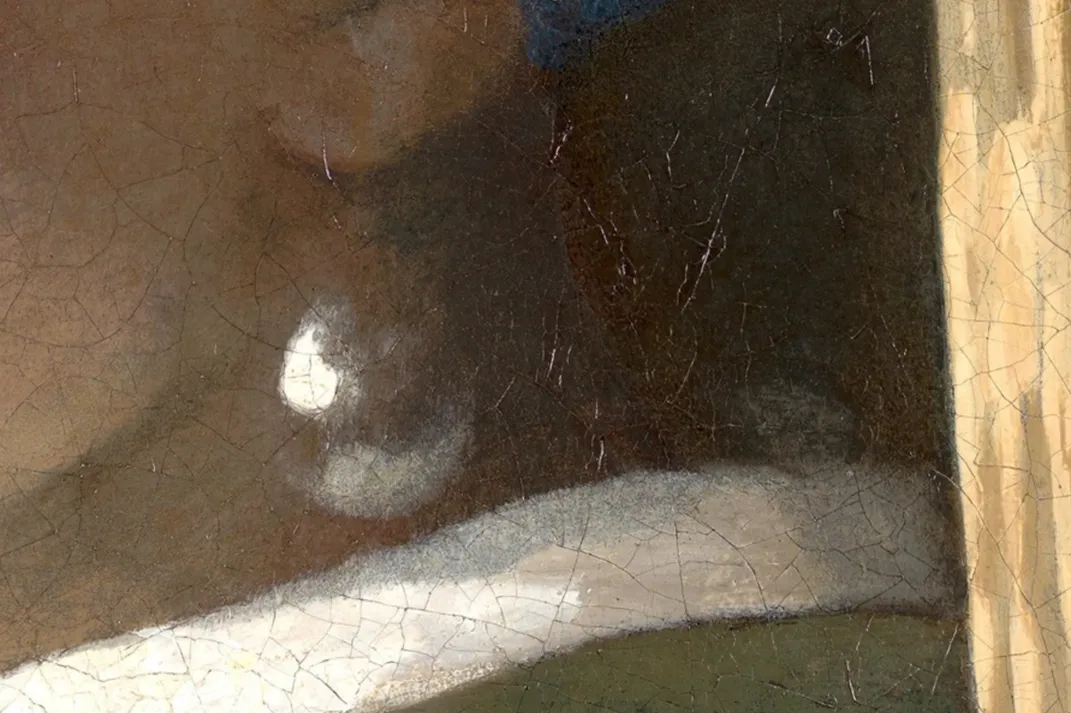Ten-Billion-Pixel Image Shows Every Inch of Vermeer’s ‘Girl With a Pearl Earring’
A new tool from the Mauritshuis offers viewers a close-up look at every fine crack and brushstroke
:focal(497x611:498x612)/https://tf-cmsv2-smithsonianmag-media.s3.amazonaws.com/filer/dd/be/ddbed50a-465b-4841-8645-9d7ac226879d/meisje_met_de_parel.jpg)
Most of the women in Johannes Vermeer’s intimate portraits look away from the viewer, whether they are occupied with their work, asleep or simply lost in thought. But the sitter in Girl With a Pearl Earring (c. 1665)—the Dutch Old Master’s most famous painting—bucks this trend: With lips slightly parted as though about to speak, the young woman turns toward the viewer, her gray-blue eyes meeting their gaze head-on.
Thanks to a stunning, ten-billion-pixel image that encourages prolonged exploration of the work, virtual visitors can now return Girl’s intense stare. As Jaron Schneider reports for PetaPixel, researchers from the portrait’s longtime home, the Mauritshuis museum in the Hague, debuted the new, interactive panorama of the painting late last month.
The Dutch museum launched the Girl in the Spotlight, a major project aimed at scanning and studying the work in extreme detail, in March 2018. Per PetaPixel, Emilien Leonhardt and Vincent Sabatier of Hirox Europe used a custom-made 3-D microscope to capture 9,100 photographs of the artwork. They then stitched the snapshots together to create a panoramic image.
“The goal of the inspection was to learn more about Vermeer’s painting technique, to evaluate the surface condition, and measure cracks and topography of key areas while assessing past restorations,” says Leonhardt in a video documenting the process.
According to the video, the team placed the 17.5- by 15-inch canvas underneath the microscope and let the machine scan it overnight. The result was a highly textured series of images that revealed every fine crack, stray bit of dust and glob of paint on the work’s surface.
Painting just 45 or so works in his lifetime, Vermeer is now widely recognized for his masterful use of light. In the new, high-resolution image of Girl, viewers can zoom in on the luminous titular earring, or perhaps the light that dances on the woman’s lips. The scans also show how Vermeer dabbed two small dots of paint on top of one another to add realistic texture to the girl’s golden shirt, notes the video.
Vermeer likely painted Girl as a tronie, or small painting that presents a single character in stereotypically Asian, Middle Eastern or imaginary garb, per Encyclopedia Britannica. The sitter wears a bright blue headscarf wrapped around her head like a turban.
Last April, researchers announced a number of surprising discoveries made during the two-year study. As Theresa Machemer reported for Smithsonian magazine at the time, the scholars found that Vermeer used costly lapis lazuli to produce the vibrant hue of the girl’s scarf. The red in her lips came from insects that live on cacti in Mexico and South America, while the white lining of her eyes originated from lead mined in England. International trade networks meant that all of these pigments were likely accessible in Delft, where the artist lived and worked his entire life.
The analysis also revealed that Vermeer’s sitter originally posed not in front of the dark grayish void seen today, but rather in front of a dark green curtain. Per a statement, the folded fabric has “disappeared over the course of the centuries” due to changes in the translucent green paint used.
Finally, though they aren’t visible to the naked eye, the figure does indeed have tiny eyelashes.
The team has yet to solve one lingering mystery: Though many have tried, no scholar has been able to successfully pinpoint the sitter’s identity.
“We were able to find out so much about Vermeer’s materials and techniques, but we still don’t know exactly who the girl is,” Mauritshuis conservator Abbie Vandivere told the Guardian’s Mark Brown last April.
“It is good that some mysteries remain and everyone can speculate about her,” Vandivere continued. “It allows people their own personal interpretation of the girl; everyone feels their own connection with the way she meets your eyes.”
/https://tf-cmsv2-smithsonianmag-media.s3.amazonaws.com/accounts/headshot/nora.png)





/https://tf-cmsv2-smithsonianmag-media.s3.amazonaws.com/accounts/headshot/nora.png)